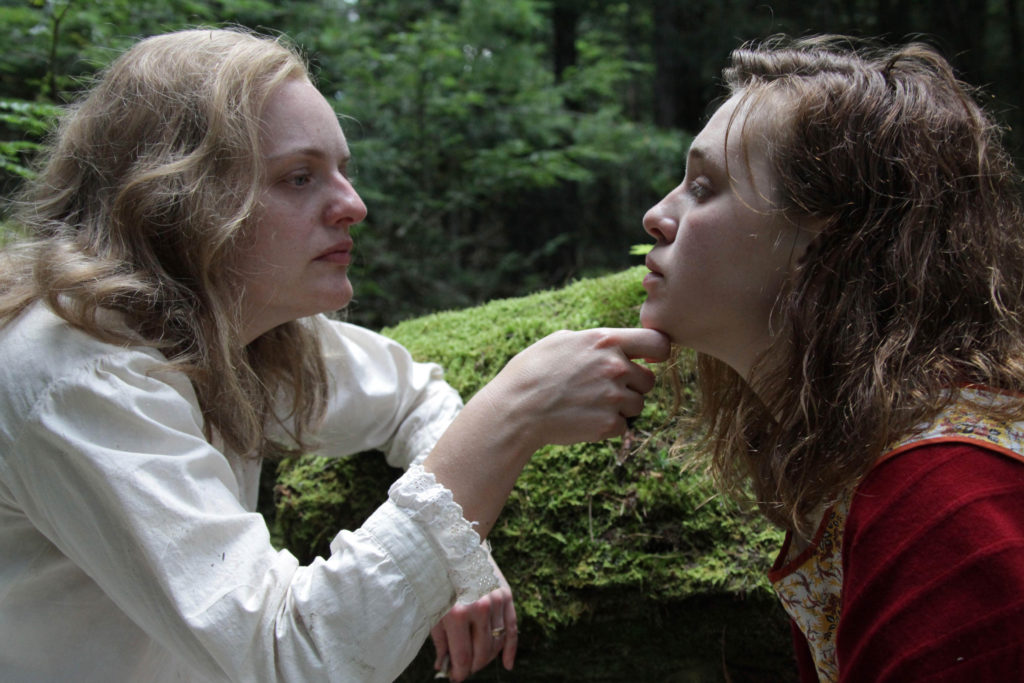Josephine Decker’s feature “Madeline’s Madeline” made its world premiere at Sundance 2018 and went on to receive a nomination for Best Picture at IFP’s Gotham Awards as well as two nominations at the Independent Spirit Awards. Decker premiered her first two narrative features at the 2014 Berlinale Forum. She also explores collaborative storytelling via TV directing, documentary making, performance art, accordion-playing, acting, teaching at CalArts and Princeton University, and leading artist residencies with the School of Making Thinking.
“Shirley” will premiere at the 2020 Sundance Film Festival on January 25.
W&H: Describe the film for us in your own words.
JD: “Shirley” is about how madness and creativity can entwine so deeply that you stop being able to tell the difference between your characters, your friends, and yourself.
W&H: What drew you to this story?
JD: I was newly obsessed with Shirley Jackson’s writing when I got the call that there was a script about Shirley that I could pitch on. Shirley’s stories are extremely structured, but also often descend into dreams. This is something I try to do in my own work, so finding her writing was like finding a map for becoming the artist I want to be!
Shirley writes about consciousness; her descent into her characters’ psychologies always ends up leading the reader down new strange corridors. She walks you daringly into doubt – which is beautiful.
I am obsessed with the mind and how it is a constantly fickle, ever-changing guide that fools you into believing that the reality you are living in is one you didn’t create yourself. Shirley is clearly obsessed with the same.
W&H: What do you want people to think about when they are leaving the theater?
JD: I am hopeful that everyone’s experience of this film is utterly unique and that you walk out of the theater to have a long conversation about what you just saw!
I also hope that people go home and read more of Shirley’s books: her stories and novels were a huge inspiration for the film.
W&H: What was the biggest challenge in making the film?
JD: This is the first feature I made that I didn’t write myself, and that was just a totally new process on all levels. I feel so grateful that I got to collaborate so closely with Sarah Gubbins, who wrote the film. She’s a wild genius. Sarah writes incredibly honest and messy female characters. I could watch her characters all day.
Since I didn’t write the film, I had to really see the scenes to know how to shoot the movie, so I took longer rehearsals with the actors. We also spent time in the edit to really make sure we were bringing together all the themes of the film in the most effective, tension-building way.
W&H: How did you get your film funded? Share some insights into how you got the film made.
JD: We had great support from Los Angeles Media Fund. My agents, Meghan Oliver and Ben Weiss at Paradigm, had worked with LAMF before, and LAMF fell in love with the script like I had! Jeffrey Soros, Simon Horsman, and Alisa Tager at LAMF are wonderfully artist-focused and supportive.
W&H: What inspired you to become a filmmaker?
JD: I had a very exciting movie-viewing session of “Monsters, Inc.” and realized I could not ignore the very obvious calling that I should go make animated children’s movies!
W&H: What’s the best and worst advice you’ve received?
JD: The worst advice ever is probably the advice the angry voice in my head gives me — that you have to work a million hours a day and “get it right” to make good art. I think maybe chilling out would be better for my art.
The best advice: “Trust yourself.” The bigger the budget, the more you have to trust your instincts. And also — love. Creating a loving team atmosphere on a movie, from production through to editing, with collaborators and financiers, will save you from a cruel spiral of chaos. Call people instead of e-mailing. Go to lunch with someone you disagree with instead of complaining about them.
W&H: What advice do you have for other female directors?
JD: This is a very good time for you. If you have an idea, tell it to people. Take it around and pitch it. Have no fear! Or you know, have fear because, I mean, who doesn’t have fear, but just let love in too. People want to see you make your movies.
W&H: Name your favorite woman-directed film and why.
JD: I’m obsessed with pretty much everything Andrea Arnold has ever made. She just puts everything in the body. The performances in her films – from the actors and the camera — are so authentic and true to the full range of play that the human form is capable of. I actually thought a lot about “Wuthering Heights” while making this movie. She made a really visceral period film, and I hadn’t seen that done quite that way before.
W&H: What differences have you noticed in the industry since the #MeToo and #TimesUp movements launched?
JD: Every female filmmaker friend I have is working constantly now — on bigger and bigger budget films. That’s such a relief! Thank you, feminist movements of the past and present, for paving the way for this magic moment! I wish it hadn’t all come at such a cost to so many women’s bodies and minds. Thank you for your fighting spirits that continue to guide us all!







